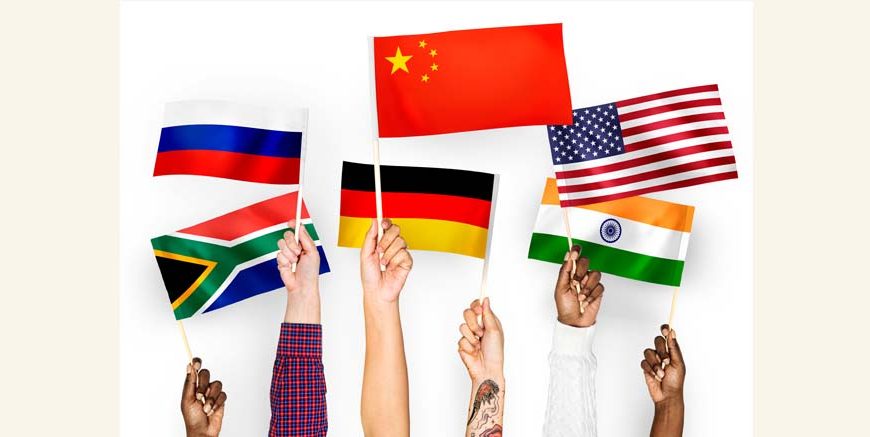Flags are a powerful symbol that acts as a reminder of a nation’s history, identity, cherished memories, and unwavering pride. For example, the red and white stripes of the United States flag symbolise bravery and purity, while the blue field represents vigilance, perseverance, and justice. Similarly, the colours of the flag of India carry deep meaning, with saffron representing courage and sacrifice, white signifying peace and truth, and green symbolising faith and chivalry.
These engaging stories behind flags can capture the attention of young learners and make the concept of flags come alive. Moreover, remembering names and visually learning about flags can open up a new level of geography and cultural advancement for children.
In this blog, we will look at some of the flags of countries and the interesting stories associated with them.
Why Should Kids Know About Flags From Different Countries?
Knowing the names of flags from different countries is a great way to promote global awareness in children. Flags encapsulate a nation’s culture, history, and values. Knowing about a nation’s flag gives children a deep insight into its history, culture, and values. For example, the Ashoka Chakra (wheel in the centre of the flag) on the Indian flag represents the wheel of law and is inspired by the Ashoka Pillar at Sarnath, which symbolises righteousness, progress, and movement.
Flags of Countries with Names for Kids
Here are some names for country flags that children will find interesting and captivating when learning about them.
- India: Tiranga
- United States: Stars and Stripes
- Japan: Nisshōki
- United Kingdom: Union Jack
- Australia: Commonwealth Blue Ensign
- Canada: Maple Leaf
- Brazil: Bandeira do Brasil
- South Africa: Rainbow Flag
- France: Tricolore
- China: Five-Star Red Flag
Our national flag, the Tiranga, is a powerful symbol of India. The three colours—saffron, white, and green—represent courage, peace, and prosperity. The Ashoka Chakra, the wheel at the centre, signifies the laws of dharma.
Interesting Fact: The very first Tiranga was actually made from hand-spun and hand-woven cloth.
The United States of America (USA) adopted its current flag in 1960. It has red and white stripes in 13 horizontal lines. 50 white stars decorate a blue field, symbolising the 50 States of America.
Fun Fact: The current design of the American flag has been in use since 1960.
The Japanese flag features a red disk in the middle, symbolising the sun, and the background is plain white, thereby making it simple yet powerful.
Fun Fact: Japan is popularly known as the “Land of the Rising Sun,” which is why the sun is a part of its flag, too.
The flag of the United Kingdom (England) incorporates the national flags of England, Scotland, and Northern Ireland, as it is made up of red, white, and blue crosses.
Fun Fact: The Union Jack is the most recognised flag worldwide.
The Otto flag’s giant blue field background represents the Australian flag. It also features a Union Jack in its left-hand corner. A large white star and five small stars, which partly represent the Southern Cross constellation, can also be found on the flag.
Fun Fact: It was used publicly for the first time on September 3, 1901, after a flag design competition held throughout the country.
The Canadian flag bears a singular red maple leaf set against a white background, framed by two red vertical bands on each side.
Fun Fact: The maple leaf is a symbol of Canada, representing its natural beauty and abundant resources.
The Brazilian flag has a green foreground and a yellow diamond with a blue globe featuring various stars and an inscription on a horizontal banner that says ordem e Progresso (meaning order and progress) encircling the globe.
Fun Fact: Each star on the flag symbolises one of the Brazilian states alongside the Federal District.
The South African flag consists of six colours: red, blue, green, yellow, black, and white. It has a unique Y shape.
Fun Fact: The South African flag was first embraced in 1994 after apartheid ended and represents unity and differing cultures.
The French flag has three vertical blue, white, and red stripes.
Fun Fact: The colours represent liberty, equality, and fraternity, the core values of the French Revolution.
The Chinese flag features a crimson field with five gold stars in the upper left corner. The largest star represents China’s Communist Party, and the four smaller stars represent the country’s various social strata.
Fun Fact: The red colour represents the Communist Revolution.
Fun Activities to Learn About Flags
Learning about all flags with names doesn’t have to be boring! Here are some fun activities for kids:
- Flag Colouring Pages: Print out black-and-white flag images and let kids colour them while learning the names.
- Flag Quiz: Create a quiz where kids match the flag image to the correct country.
- DIY Flag Craft: Use paper, paint, and sticks to create mini flags at home.
- Flag Memory Game: Make a memory game with cards featuring country flags with names.
- Virtual Tour: Use online resources to explore flags from different countries and their histories.
Why Flags Matter
Flags are powerful storytellers, far exceeding their basic function as symbols. India’s flag, for instance, evokes the memory of the struggles and sacrifices that ultimately led to the nation’s independence. Moreover, children can better understand the globe and its many cultures by studying a list of national flags with names.
Conclusion
Knowing the names of flags from different countries can entertain your little ones and help them learn a lot about a country’s culture, tradition, and history. Every flag has a story, and with this blog, we have tried to convey the stories, facts, and history of flags from different countries. Keen on boosting your child’s general knowledge? Check out our blog, General Knowledge For Kids: 50 GK Questions & Answers, for brain teasers and GK quizzes. Also, don’t forget to check out EuroKids Blogs for more insights into young children’s development, learning, and nutrition.
We at EuroKids are committed to fostering young learners via dynamic and captivating approaches. Our curriculum is made to help children discover the world around them while making learning enjoyable and purposeful. Visit the nearest EuroKids centre today to learn more about our programs!















